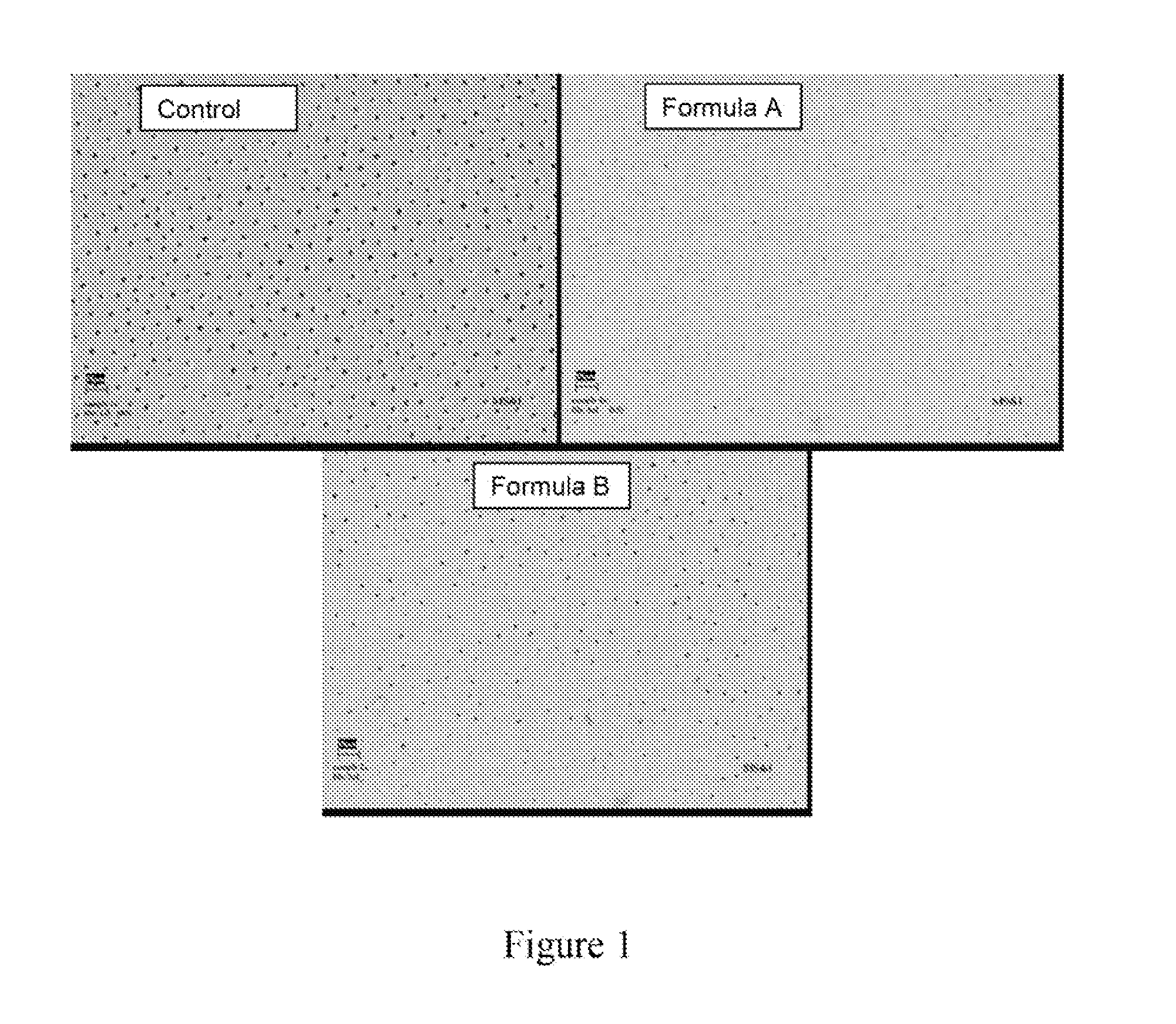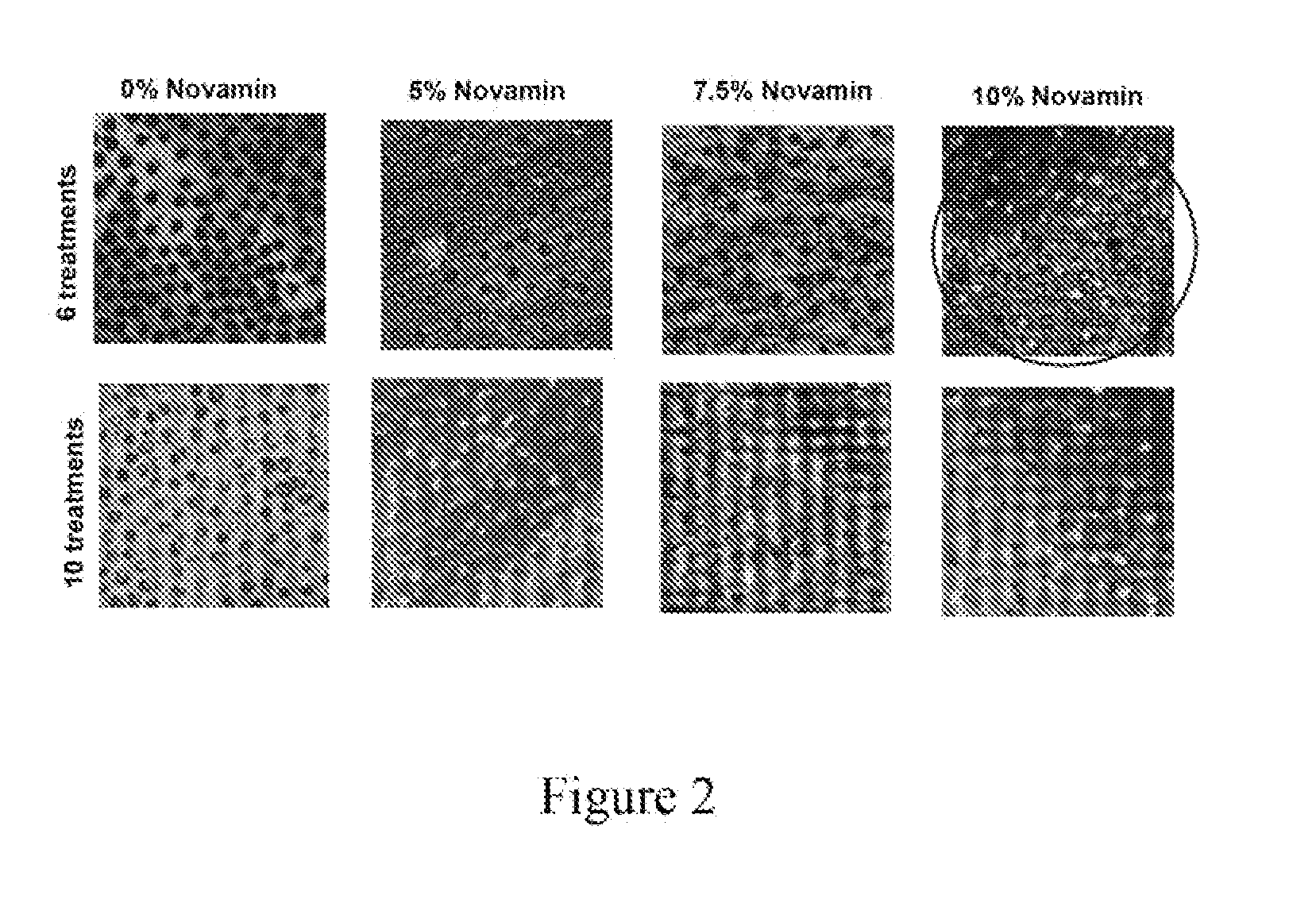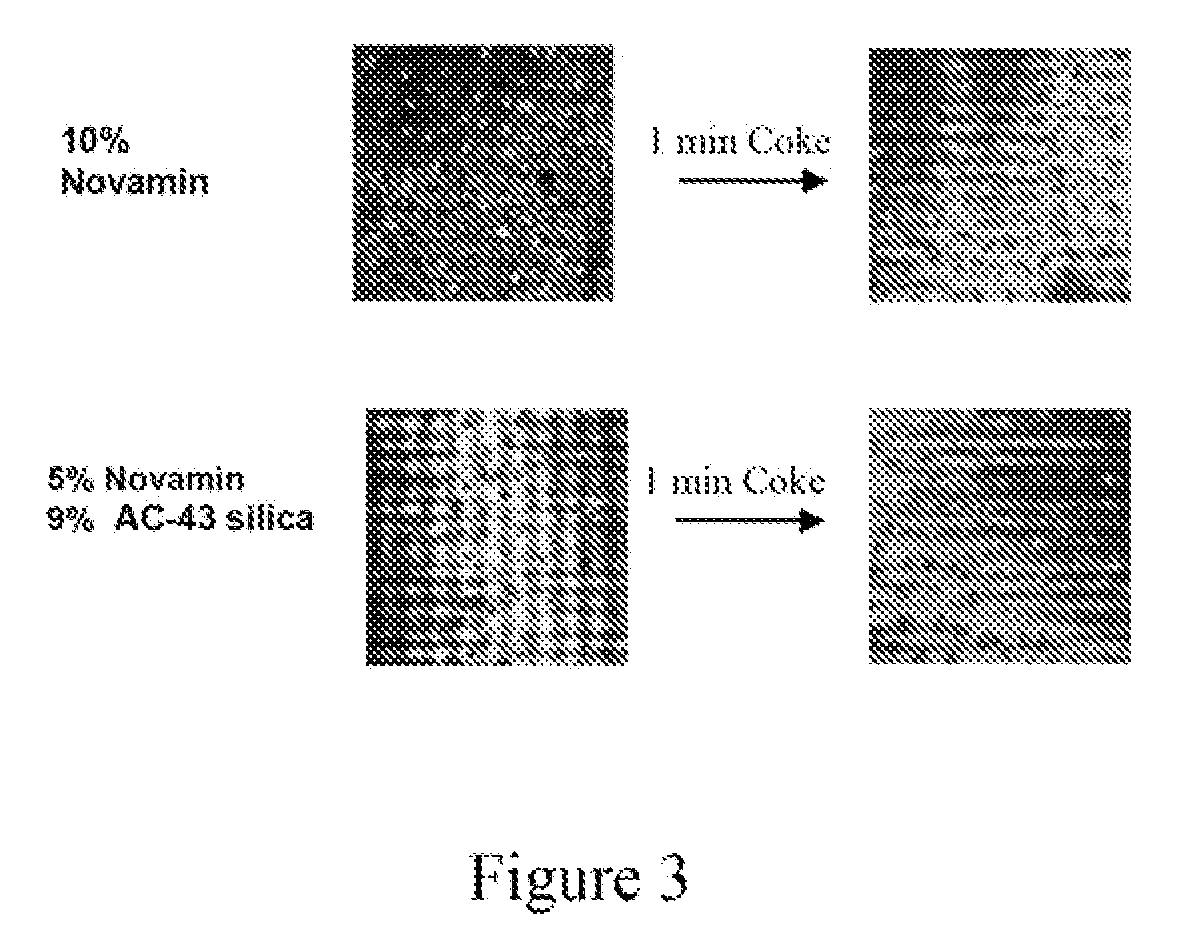Dual action dentifrice compositions to prevent hypersensitivity and promote remineralization
- Summary
- Abstract
- Description
- Claims
- Application Information
AI Technical Summary
Benefits of technology
Problems solved by technology
Method used
Image
Examples
example 1
[0140]Those of ordinary skill in the art will appreciate that the dentifrice compositions of the invention can be formulated using methods known in the art.
[0141]Table 1 describes a formulation with a bioactive glass and potassium chloride. In this illustrative example, a non-aqueous formula was prepared, in which the bioactive glass and potassium chloride were suspended. When the formula contacts water / saliva in the mouth, the potassium chloride and bioactive glass dissolve. The dissolved calcium and phosphate in the bioactive glass matrix can then react to form a precipitate that can block dentinal tubules. The potassium chloride salt can be dissolved in the glycerin in the formulation with slight heating:
TABLE 1Non-aqueous Toothpaste with Bioactive Glass (Formula A)IngredientsWt. %Glycerin58.8Bioactive Glass (Novamin ®)5Pluracare L12205Saccharin0.3Zeodent 115 Silica20Zeodent 165 Silica3KCl3.7MFP1.1SLS Powder1.2Titanium Dioxide1Flavor0.8Total (wt. %)100
example 2
[0142]A similar approach can be used where calcium chloride and sodium phosphate salts are used in place of the bioactive glass in the non-aqueous formula. Upon contact with water / saliva in the mouth, the calcium chloride and sodium phosphate react and precipitate calcium phosphate on the tooth to block dentinal tubules. An example of a formula is described in Table 2 below. The calcium chloride, sodium phosphate, and potassium chloride salts can be dissolved in glycerin in the formula with slight heating.
TABLE 2Non-aqueous Toothpaste with Calcium Phosphate (Formula B)IngredientsWt. %Glycerin60Calcium chloride3Na+ phosphate dibasic2.5Pluracare L12205Saccharin0.3Zeodent 115 Silica18.3Zeodent 165 Silica3KCl3.7MFP1.1SLS Powder1.2Titanium Dioxide1Flavor0.8Total (wt. %)100
example 3
[0143]Etched dentin discs were brushed 14 times for 45 seconds with either Formula A or B and soaked in phosphate buffer between treatments. Another set of discs was brushed with phosphate buffer only (control). Discs were evaluated with an electron spectroscopy for chemical analysis (“ESCA”) and scanning electron microscope (“SEM”) to determine if an occlusive deposit formed. As shown below in Table 3 both Formula A and B showed significant deposition of calcium phosphate in ESCA (high Ca, P, and O levels) and substantial dentinal occlusion in SEM. FIG. 1 illustrates the SEM results.
TABLE 3ESCA ResultsAtomic PercentSampleCaPOBuffer Control0.90.722..4Formula A8.06.340.3Formula B7.45.639.3
[0144]It is noteworthy that fluoride was stable and recoverable in Formulas A and B after aging them at elevated temperatures. After aging for 4 weeks at 40° C., 95% and 82% of the initial fluoride was recovered in Formulas A and B, respectively. The non-aqueous formulations prevent fluoride from di...
PUM
| Property | Measurement | Unit |
|---|---|---|
| Length | aaaaa | aaaaa |
| Length | aaaaa | aaaaa |
| Length | aaaaa | aaaaa |
Abstract
Description
Claims
Application Information
 Login to View More
Login to View More - R&D
- Intellectual Property
- Life Sciences
- Materials
- Tech Scout
- Unparalleled Data Quality
- Higher Quality Content
- 60% Fewer Hallucinations
Browse by: Latest US Patents, China's latest patents, Technical Efficacy Thesaurus, Application Domain, Technology Topic, Popular Technical Reports.
© 2025 PatSnap. All rights reserved.Legal|Privacy policy|Modern Slavery Act Transparency Statement|Sitemap|About US| Contact US: help@patsnap.com



